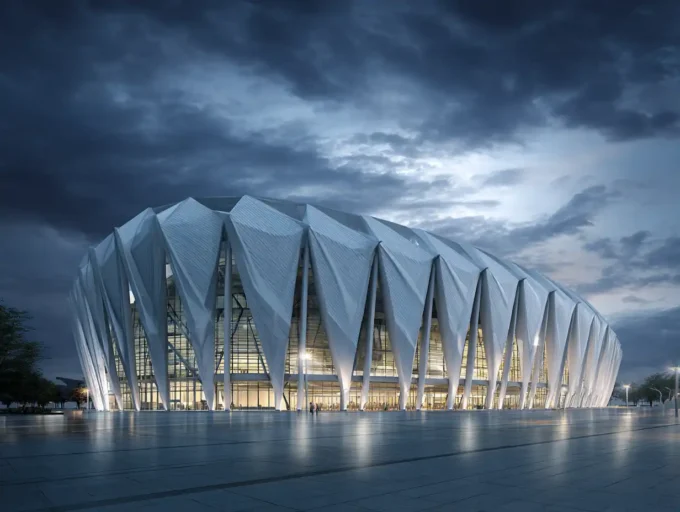Our surroundings have a profound impact on how we feel, think, and function. The spaces we inhabit every day—whether homes, offices, or public areas—can either nurture our well-being or contribute to stress and discomfort. As we become more aware of the connection between our environment and mental health, architects and designers are reimagining spaces to support emotional balance and overall wellness.
By blending thoughtful design with psychology, these architectural spaces go beyond aesthetics. They embrace natural light, calming colors, open layouts, and even biophilic elements to create environments that soothe the mind and uplift the spirit. It’s not just about beauty; it’s about building spaces that help us thrive. Let’s explore how these designs are shaping a healthier, more mindful future for all of us.
Understanding Architectural Spaces And Mental Health
Architectural spaces impact mental health by shaping how we feel, think, and interact daily. Design elements like spatial organization, materials, light, and acoustics directly affect emotional well-being. For example, confined layouts and poor lighting increase stress, while open spaces and ample daylight promote calmness.
Positive spaces support brain function by reducing anxiety and improving mood. Research by the Environmental Psychology journal shows that access to nature, natural elements, and well-ventilated environments correlates with lowered cortisol levels.
Architects focus on creating mindful designs to enhance mental health. Strategies include biophilic design, sensory balance, and adaptive layout planning. For instance, integrating greenery improves relaxation, while versatile spaces better accommodate varying emotional needs. These approaches align physical settings with psychological resilience.
Key Principles Of Design For Mental Well-being
Designing spaces to promote mental health requires integrating features that support relaxation, comfort, and emotional resilience. Key principles focus on enhancing sensory experiences and fostering a connection to both nature and community.
Natural Light And Open Spaces
Natural light and spacious layouts enhance mental clarity and productivity. Research links adequate daylight exposure to improved mood and reduced symptoms of depression. Large windows, skylights, and open floor plans maximize natural light penetration and create an expansive feel. Incorporating multifunctional open spaces allows individuals to move freely, reducing stress and encouraging flexible interactions.
Biophilic Design Elements
Biophilic design introduces nature into built environments to promote tranquility. Features like indoor plants, green walls, and water elements decrease anxiety and improve focus. Natural materials, including wood and stone, evoke calmness and reduce sensory overstimulation. Views of greenery or other natural landscapes support emotional restoration and enhance overall well-being.
Acoustic Considerations
Acoustic quality directly impacts comfort and mental health. Poor sound insulation or excessive noise increases stress and disrupts focus. Using sound-absorbing materials such as carpets, acoustic panels, and soft furnishings minimizes noise pollution. Incorporating soundscapes like water features or calming ambient sounds helps create auditory environments that enhance relaxation while fostering a sense of privacy.

Examples Of Architectural Spaces That Promote Mental Health
Architectural spaces designed with mental health in mind integrate features that foster emotional balance, enhance mood, and reduce stress. Included below are examples that showcase how design can actively support mental well-being.
Therapeutic Gardens And Green Spaces
Therapeutic gardens and green spaces provide restorative environments for individuals. Designs in these spaces frequently include walking paths, water features, and areas for physical relaxation, such as benches surrounded by greenery. For example, the Maggie’s Centers in the UK integrate gardens to reduce stress in cancer patients. Research attributes exposure to green spaces with decreases in anxiety, reduced cortical responses to stress, and improved overall psychological health.
Mental Health Facilities With Healing Designs
Mental health facilities with healing designs focus on creating tranquil yet functional settings. These buildings often incorporate large windows for daylight, private but open-feeling consultation spaces, and soothing color schemes. The Centre for Addiction and Mental Health (CAMH) in Toronto exemplifies this approach, featuring natural materials and abundant outdoor areas. We see how such features enhance feelings of safety, remove institutional stigma, and support recovery among patients.
Community Spaces That Encourage Social Connection
Community spaces that promote social connection use spatial layouts to inspire interaction. Examples include libraries with shared study areas, co-working hubs with flexible seating, and public plazas. The High Line in New York combines shared walkways, green areas, and seating to organically stimulate community engagement. Strong social ties created in these spaces can mitigate loneliness and lead to better emotional health.

Challenges In Designing For Mental Health
Designing spaces that support mental health involves navigating complex demands. Architects must balance practical functions, personal preferences, and the psychological impact of the built environment.
Balancing Functionality And Aesthetics
Creating spaces that are both functional and visually appealing is a critical challenge. Practical considerations like accessibility, safety, and maintenance need to align with aesthetic goals, such as using calming colors or natural materials. For instance, in healthcare settings, materials must ensure hygiene without sacrificing warmth or comfort. In addition, poorly integrated aesthetics can diminish functionality—for example, overly minimalistic designs may lack the essential warmth that fosters emotional comfort.
Addressing Diverse Needs And Preferences
No universal solution exists for all users, given varying cultural backgrounds, personal tastes, and mental health needs. For example, some individuals find open layouts calming, while others may feel vulnerable in non-compartmentalized spaces. Accommodating neurodiverse individuals, including those with sensory sensitivities, adds to the complexity. To address these variations, we incorporate flexible designs, such as adjustable lighting and customizable furnishings, ensuring spaces support a wide range of preferences without overwhelming users.

Future Trends In Mental Health-Centric Architecture
Emerging trends in mental health-focused architecture prioritize adaptability, technology, and sustainability to enhance emotional well-being. These advancements aim to address diverse psychological needs while creating more inclusive spaces.
- Personalized Environments
Individual-centric spaces are becoming more prevalent, featuring adjustable lighting, temperature, and acoustic settings. For example, smart systems allow residents or users to adapt environments based on their mood or specific mental health needs. - Biophilic Innovations
Integrating advanced technologies in biophilic design, like smart glass panels that simulate natural daylight or virtual reality (VR) nature experiences, is gaining popularity. These tools enhance mental health benefits by mimicking nature in urban or resource-limited areas. - Neuroarchitecture Applications
Modern neuroarchitecture leverages neuroscience to inform design choices. Facilities increasingly incorporate curved layouts, soothing textures, and mindful spatial distributions that optimize brain function and emotional health. - Mixed-Use Wellness Spaces
Architects are developing spaces that combine work, recreation, and rejuvenation, reducing stress and enhancing overall balance. Co-living developments and coworking hubs often include mindfulness zones, relaxation pods, and green terraces. - Sustainable and Energy-Efficient Designs
Eco-conscious architecture, like zero-energy buildings and green roofs, promotes sustainability while bolstering mental health. These designs ensure a harmonious connection to nature and reduce environmental anxiety.
As architecture evolves, these future-forward trends demonstrate a commitment to creating spaces that promote mental well-being regardless of varying personal and societal challenges.
Conclusion
Architectural spaces play an essential role in shaping mental health by integrating design elements that foster emotional well-being and resilience. Through approaches like biophilic design, adaptive layouts, and innovative technologies, we can create environments that support diverse emotional needs, reduce stress, and encourage relaxation. These designs not only reflect a growing awareness of the connection between built environments and psychological health but also emphasize the necessity of intentional, user-centric strategies in architecture. By prioritizing adaptability, sustainability, and inclusivity, we ensure spaces remain effective in promoting mental health across varying contexts and challenges.















Leave a comment